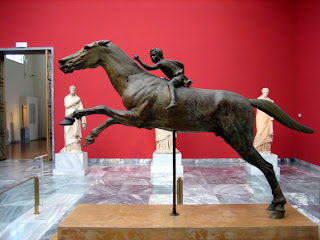RENAISSANCE ART – HIGH RENAISSANCE
The Renaissance was a period in European history, from the 14th to the 17th century, regarded as the cultural bridge between the Middle Ages and modern history. It started as a cultural movement in Italy in the Medieval period and later spread to the rest of Europe, marking the beginning of the Modern age. Renaissance period saw a great revival of interest in the classical learning and values of ancient Greece and Rome. The two main periods in Renaissance Age are Early Renaissance and High Renaissance.
By the end of the 15th century, Rome had displaced Florence as the principal center of Renaissance art, reaching a high point under the powerful and ambitious Pope Leo X (a son of Lorenzo de’ Medici). Three great masters – Leonardo da Vinci, Michelangelo and Raphael – dominated the period known as the High Renaissance, which lasted roughly from the early 1490s until the sack of Rome by the troops of the Holy Roman Emperor Charles V of Spain in 1527.
Michelangelo Buonarroti (1475-1564) created works on a vast scale. Even though he is known as a sculptor, he achieved greatness as a painter as well, notably with his giant fresco covering the ceiling of the Sistine Chapel, completed over four years (1508-12) and depicting various scenes from Genesis.
Ceiling of the Sistine Chapel
By Michelangelo
1508 - 1512
To any visitor of Michelangelo’s Sistine Chapel, two features become immediately and undeniably apparent: 1) the ceiling is really high up, and 2) there are a lot of paintings up there. Michelangelo began to work on the frescoes for Pope Julius II in 1508, replacing the original blue ceiling of the chapel dotted with stars. Michelangelo proposed to Pope Julius II to paint the Old Testament scenes divided by the fictive architecture that he uses to organize the composition.
Ceiling of the Sistine Chapel
By Michelangelo
1508 - 1512
Diagram of the subjects of the Sistine Chapel Ceiling
The narrative begins at the altar and is divided into three sections. In the first three paintings, Michelangelo tells the story of The Creation of the Heavens and Earth; this is followed by The Creation of Adam and Eve and the Expulsion from the Garden of Eden; finally is the story of Noah and the Great Flood. Ignudi, or nude youths, sit in fictive architecture around these frescoes, and they are accompanied by prophets and sibyls (ancient seers who, according to tradition, foretold the coming of Christ) in the spandrels. In the four corners of the room, in the pendentives, one finds scenes depicting the Salvation of Israel.
Michelangelo completed the Sistine Chapel in 1512.






Comments
Post a Comment